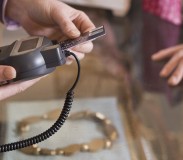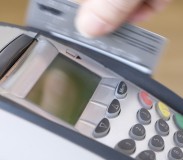
The Future of Credit Cards

For today’s modern shopper, it’s hard to imagine a world without credit cards. You can use your credit card to get points for everyday purchases like gas and groceries. Credit cards are also popular for big-ticket items that you’re not ready to pay for right away. Not to mention, having a credit card is essential if you want to make purchases online, with the majority of retailers accepting major credit cards such as Mastercard, Visa, and American Express. So how are credit cards changing the future of shopping? Read on to find out.
History
Credit cards have actually been around since the 1920s – almost a century. The earliest credit cards were offered by retailers who allowed their customers to make in-store purchases that they could pay back later. The plastic credit cards used today were introduced in the 1950s and quickly became a popular form of payment, as they offered customers flexibility in paying for purchases. While today credit cards are a mainstay in a large number of transactions, they’re still adapting with technology.
Predictions
How we interact with and use credit cards is changing as technology which enables secure purchases continues to develop. In the future, consumers will not be required to carry a plastic credit card in order to make purchases using a credit card account. Instead, the account will be securely linked to your mobile phone or other personal device. Near Field Communication (NFC) enables the customer to simply swipe their device near the purchase terminal. The mobile device is embedded with a chip that authorizes the purchase. The communication between the terminal and the device is wireless. This type of technology is already available with new applications such as Apple Pay, the Isis SoftCard and the Google Wallet. Applications encrypt your credit card information once you’ve loaded it so that your card data can’t be intercepted.
Improved Security
Thieves can access your credit card information via two methods. First, they can put a card reader in the terminal to copy and store your credit card number. Second, they can hack into the merchant’s online server to gain access to stored customer information. Without a physical card, the first method of credit card theft is avoided entirely. When it comes to the second type of theft, circumventing thieves is more difficult. However, advances in NFC technology include cards and devices that label each transaction with a unique card number. That number is stored in the retailer’s server, but it can’t be used for future transactions and is therefore useless to thieves.
Increased Convenience
 Most people no longer leave home without their mobile phones. Technology that allows customers to make purchases using their devices offers added convenience, as you’ll no longer have to carry a wallet with a bevy of cards. It also saves time in the checkout line, when customers don’t have to dig to find the card they’re looking for.
Most people no longer leave home without their mobile phones. Technology that allows customers to make purchases using their devices offers added convenience, as you’ll no longer have to carry a wallet with a bevy of cards. It also saves time in the checkout line, when customers don’t have to dig to find the card they’re looking for.
Quick Wrap-Up
Credit cards are a staple of modern transactions. In the future, physical cards may disappear in favor of credit card accounts that can be used via mobile devices, providing added security and increased convenience.







